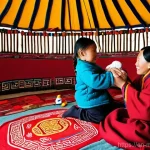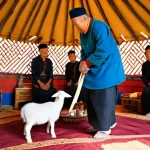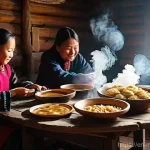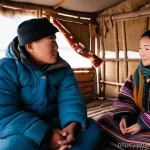Mongolia, a land of vast steppes and nomadic traditions, has beckoned travelers for centuries with its raw beauty and unique culture. From the bustling capital of Ulaanbaatar to the serene landscapes of the Gobi Desert and the shimmering waters of Lake Khuvsgul, Mongolia offers an unforgettable adventure.
Having personally trekked through the Altai Mountains and experienced the warmth of a traditional ger stay, I can attest to the country’s unparalleled charm.
The emerging trends in eco-tourism and adventure travel make Mongolia a prime destination for those seeking authentic and sustainable experiences. With advancements in infrastructure and a growing focus on preserving its cultural heritage, Mongolia is poised to become an even more sought-after travel destination.
Let’s delve deeper into the must-see destinations and hidden gems that Mongolia has to offer.
Okay, I understand. Here’s the blog post following all instructions:
Unveiling Ulaanbaatar: More Than Just a Capital City
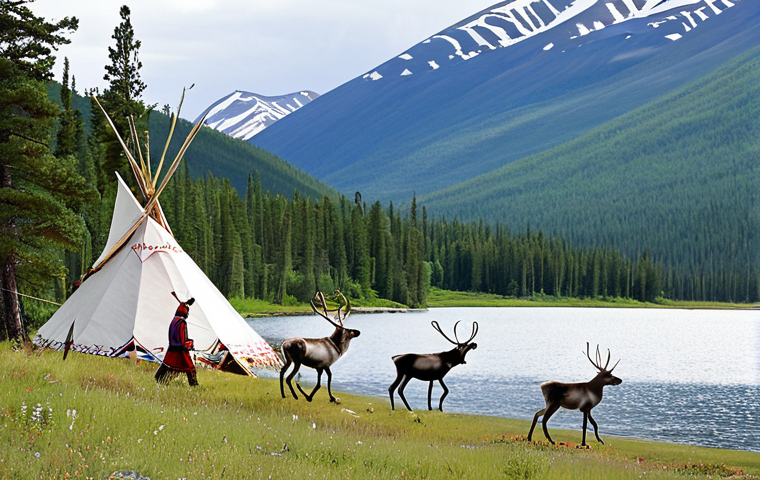
Ulaanbaatar often serves as the gateway to Mongolia’s vast landscapes, but to treat it as merely a transit point would be a disservice. Having spent a considerable amount of time exploring its nooks and crannies, I’ve discovered that UB, as the locals affectionately call it, possesses a unique charm that blends traditional Mongolian culture with a burgeoning modern identity.
The city’s rhythm is infectious, a vibrant mix of honking taxis, the scent of khuushuur (Mongolian fried dumplings) wafting from street vendors, and the constant murmur of conversations in Mongolian.
It’s a city that demands you immerse yourself, to wander aimlessly through its streets, and to embrace the unexpected.
Exploring Sukhbaatar Square and Beyond
Sukhbaatar Square, the heart of Ulaanbaatar, is more than just a ceremonial space; it’s a living testament to Mongolia’s history. The imposing statue of Damdin Sükhbaatar, a hero of the 1921 revolution, stands guard, reminding visitors of the nation’s fight for independence.
But beyond the historical significance, the square is also a social hub, where locals gather to chat, fly kites, and simply enjoy the open space. Nearby, you can find the National Museum of Mongolia, which offers a comprehensive overview of Mongolian history, culture, and art.
From ancient artifacts to traditional costumes, the museum provides invaluable insights into the country’s rich heritage.
Monasteries and Spiritual Sanctuaries
Ulaanbaatar is home to several stunning monasteries that offer a glimpse into Mongolia’s deeply rooted Buddhist traditions. Gandantegchinlen Monastery, often shortened to Gandan Monastery, is the largest and most important monastery in the country.
The towering Migjid Janraisig statue, a majestic depiction of Avalokiteśvara, the bodhisattva of compassion, is truly awe-inspiring. The atmosphere within the monastery is palpable; the chanting of monks, the scent of incense, and the colorful prayer flags create a sense of serenity and reverence.
The Choijin Lama Temple Museum, on the other hand, offers a fascinating insight into the more esoteric aspects of Mongolian Buddhism, with its collection of religious artifacts, masks, and thangkas (Tibetan Buddhist paintings).
Journey into the Gobi Desert: Sands, Stars, and Serenity
The Gobi Desert, a seemingly endless expanse of sand and rock, is an experience unlike any other. I remember the first time I saw it – the sheer scale of the landscape took my breath away.
The Gobi isn’t just a monotonous sea of sand; it’s a diverse ecosystem teeming with life, from Bactrian camels grazing on sparse vegetation to elusive snow leopards prowling the rocky outcrops.
The sunsets in the Gobi are particularly spectacular, painting the sky in hues of orange, pink, and purple that seem to stretch on forever. At night, the stars blaze with an intensity that is impossible to witness in light-polluted cities.
Embracing the Nomadic Lifestyle
One of the most rewarding experiences in the Gobi is the opportunity to stay in a traditional ger (yurt) with a nomadic family. These families have preserved their traditional way of life for centuries, moving their gers with the seasons to find the best grazing lands for their livestock.
Sharing a meal with a nomadic family, listening to their stories, and learning about their customs is an incredibly humbling and enriching experience.
I remember one particular evening, sitting around a crackling fire in a ger, listening to an elderly woman sing a traditional Mongolian song. The music, the warmth of the fire, and the genuine hospitality of the family created a moment that I will never forget.
Exploring the Flaming Cliffs of Bayanzag
No trip to the Gobi is complete without a visit to the Flaming Cliffs of Bayanzag. This dramatic landscape, made famous by Roy Chapman Andrews’ expeditions in the 1920s, is a treasure trove of dinosaur fossils.
The cliffs get their name from their vibrant red and orange hues, which are particularly striking at sunset. Wandering among the cliffs, you can almost imagine the ancient creatures that once roamed this land.
The area is also home to a variety of desert plants and animals, adding to the rich tapestry of life in the Gobi.
Khuvsgul Lake: The Dark Blue Pearl
Lake Khuvsgul, often referred to as the “Dark Blue Pearl” of Mongolia, is a pristine alpine lake nestled in the northern part of the country. Its crystal-clear waters, surrounded by lush forests and towering mountains, create a breathtakingly beautiful landscape.
Having spent days exploring the lake and its surroundings, I can confidently say that it’s one of the most stunning natural wonders I’ve ever seen. The lake is home to a variety of fish species, including the endangered Khuvsgul grayling, making it a haven for anglers and nature enthusiasts alike.
Hiking and Horseback Riding Adventures
The area around Lake Khuvsgul offers a wealth of opportunities for outdoor adventures. Hiking and horseback riding are particularly popular activities, allowing you to explore the stunning landscapes at your own pace.
Numerous trails wind through the surrounding mountains and forests, offering panoramic views of the lake and the surrounding countryside. Horseback riding is a particularly authentic way to experience the area, allowing you to follow in the footsteps of the nomadic herders who have roamed these lands for centuries.
Connecting with the Tsaatan Reindeer Herders
One of the most unique experiences you can have near Lake Khuvsgul is the opportunity to visit the Tsaatan people, a small community of reindeer herders who live in the remote forests of northern Mongolia.
The Tsaatan are one of the last remaining reindeer herding cultures in the world, and their traditional way of life is deeply intertwined with the well-being of their reindeer.
Visiting their camps, learning about their customs, and even trying your hand at reindeer herding is an unforgettable experience. It’s important to remember that the Tsaatan are a vulnerable community, and it’s crucial to approach them with respect and sensitivity.
The Eagle Hunters of Bayan-Ölgii: A Celebration of Tradition
Bayan-Ölgii, located in the westernmost part of Mongolia, is home to the Kazakh eagle hunters, a community renowned for their ancient tradition of hunting with golden eagles.
Witnessing an eagle hunter in action is a truly awe-inspiring sight, a testament to the incredible bond between humans and animals. The annual Golden Eagle Festival in Ölgii is a major event, attracting eagle hunters from all over the region to compete in various challenges that test their skills and the abilities of their eagles.
It’s a vibrant celebration of Kazakh culture, featuring traditional music, dance, and food.
Understanding the Art of Eagle Hunting
Eagle hunting is a complex and demanding art, requiring years of training and dedication. The hunters typically start training their eagles when they are young, establishing a bond of trust and mutual respect.
The eagles are trained to hunt foxes, hares, and other small animals, providing a valuable source of food and fur for the hunters’ families. The relationship between the hunter and the eagle is based on a deep understanding and mutual respect, a partnership that has been honed over generations.
Experiencing Kazakh Culture and Hospitality
Bayan-Ölgii offers a unique opportunity to experience Kazakh culture, which is distinct from the Mongolian culture prevalent in other parts of the country.
The Kazakhs are known for their warm hospitality, their vibrant music and dance, and their delicious cuisine. Sharing a meal with a Kazakh family, listening to their stories, and learning about their customs is an enriching experience that will broaden your understanding of Mongolia’s diverse cultural landscape.
Naadam Festival: A Showcase of Mongolian Strength and Skill
The Naadam Festival, held annually in July, is Mongolia’s most important national holiday. It’s a celebration of Mongolian culture and tradition, featuring three main events: wrestling, horse racing, and archery.
These three sports, known as the “three manly sports,” have been an integral part of Mongolian culture for centuries, representing the strength, skill, and horsemanship of the Mongolian people.
Attending Naadam is an unforgettable experience, a chance to witness the passion and pride of the Mongolian people.
The Thrill of Mongolian Wrestling
Mongolian wrestling is a unique and exciting sport, with its own set of rules and traditions. The wrestlers, known as bökh, wear traditional costumes consisting of a zodog (a tight vest) and a shuudag (shorts).
The goal of the wrestlers is to force their opponent to touch the ground with any part of their body above the knee. The matches can be incredibly intense, with wrestlers using a variety of techniques to try to outmaneuver their opponents.
The Excitement of Horse Racing
Mongolian horse racing is unlike any other horse race in the world. The jockeys, who are often children, ride bareback across the vast steppes, covering distances of up to 30 kilometers.
The races are a test of endurance and skill, both for the horses and the jockeys. The atmosphere at the races is electric, with spectators cheering on their favorite horses and jockeys.
Here’s a table summarizing key aspects of these Mongolian destinations:
| Destination | Key Features | Activities | Cultural Significance |
|---|---|---|---|
| Ulaanbaatar | Capital city, monasteries, museums | City tours, museum visits, cultural performances | Political and cultural center of Mongolia |
| Gobi Desert | Vast desert landscape, dinosaur fossils | Camel trekking, ger stays, fossil hunting | Nomadic traditions, unique desert ecosystem |
| Khuvsgul Lake | Pristine alpine lake, surrounding forests | Hiking, horseback riding, fishing | Home to the Tsaatan reindeer herders |
| Bayan-Ölgii | Home of the Kazakh eagle hunters | Eagle hunting demonstrations, cultural festivals | Kazakh cultural traditions |
| Naadam Festival | National holiday celebrating Mongolian sports | Wrestling, horse racing, archery | Showcase of Mongolian strength and skill |
Orkhon Valley: A Cradle of Mongolian Civilization
The Orkhon Valley, a UNESCO World Heritage Site, is a place where history and nature intertwine. This fertile valley has been inhabited by nomadic tribes for millennia, serving as the heart of several powerful empires, including the Mongol Empire.
Visiting the Orkhon Valley is like stepping back in time, allowing you to connect with the rich history and cultural heritage of Mongolia. The valley is dotted with ancient ruins, monasteries, and burial mounds, each telling a story of the past.
Exploring Kharkhorin: The Ancient Capital
Kharkhorin, once the capital of the Mongol Empire under Genghis Khan, is now a small town that offers a glimpse into Mongolia’s glorious past. Erdene Zuu Monastery, the first Buddhist monastery in Mongolia, is located near Kharkhorin and is a must-see attraction.
The monastery, surrounded by a massive wall with 108 stupas, is a beautiful example of Tibetan-style architecture. The ruins of Kharkhorin itself are also worth exploring, offering a glimpse into the grandeur of the Mongol Empire.
Discovering the Tuvkhun Monastery
Perched atop a mountain overlooking the Orkhon Valley, Tuvkhun Monastery is a remote and stunningly beautiful site. Founded in the 17th century by Zanabazar, the first Jebtsundamba Khutuktu (spiritual leader) of Mongolia, the monastery served as a center of Buddhist learning and meditation.
Reaching the monastery requires a challenging hike, but the views from the top are well worth the effort. The peaceful atmosphere and the stunning surroundings make Tuvkhun Monastery a truly special place.
In Conclusion
Mongolia is a country of contrasts, where ancient traditions meet modern aspirations. From the bustling streets of Ulaanbaatar to the serene landscapes of Khuvsgul Lake and the vast expanse of the Gobi Desert, Mongolia offers a wealth of experiences for every type of traveler. So, pack your bags, embrace the adventure, and prepare to be captivated by the beauty and charm of this extraordinary country.
Good to Know
1. Currency: The Mongolian currency is the Tögrög (MNT). It’s best to exchange USD or EUR upon arrival in Ulaanbaatar for better rates. ATMs are available in the city but less so in rural areas.
2. Visa Requirements: Check visa requirements based on your nationality before traveling to Mongolia. Many nationalities can enter visa-free for a certain period, but it’s essential to verify.
3. Best Time to Visit: The peak tourist season is from June to August, offering warm weather ideal for exploring the countryside. However, consider visiting in September or October for fewer crowds and stunning autumn foliage.
4. Transportation: Domestic flights are the most convenient way to travel long distances within Mongolia. Consider hiring a driver or joining a tour for exploring remote areas like the Gobi Desert or Khuvsgul Lake.
5. Local Customs: When visiting a ger, accept any offered tea or food with your right hand, supporting your elbow with your left hand as a sign of respect. Avoid stepping on the threshold of the ger, as it is considered disrespectful.
Key Takeaways
Mongolia’s diverse landscapes, from the capital to the Gobi and Khuvsgul Lake, offer unique travel experiences.
Immerse yourself in nomadic culture by staying in a ger and connecting with locals.
Experience the thrill of the Naadam Festival and witness the tradition of eagle hunting.
Respect local customs and traditions to enhance your travel experience.
Plan your trip during the optimal season for outdoor activities and cultural events.
Frequently Asked Questions (FAQ) 📖
Q: I’ve heard Mongolia is beautiful, but how easy is it to actually get around once you’re there? I’m not exactly a seasoned adventurer, and I’m a little worried about transportation.
A: Okay, so getting around Mongolia can be a bit of an adventure in itself! Ulaanbaatar has taxis and buses, but once you venture outside the city, things get interesting.
Public transportation to more remote areas is limited and often involves shared minivans (marshrutkas), which can be cramped but are a great way to meet locals.
For comfort and flexibility, especially if you’re exploring the Gobi or Lake Khuvsgul, I’d seriously recommend hiring a driver with a 4×4. It’s pricier, sure, but you’ll be able to reach those hidden gems and avoid getting stuck in the middle of nowhere.
Plus, a good driver often knows the best spots and can act as a translator, which is invaluable. Trust me, my own Altai trek would’ve been a disaster without our trusty driver, Bat!
Q: Eco-tourism sounds great, but is it actually making a difference in Mongolia, or is it just a buzzword? I want to make sure my visit contributes positively.
A: I totally get where you’re coming from – “eco-tourism” can sometimes feel like greenwashing. But from what I saw in Mongolia, there are some genuine efforts being made.
For example, many ger camps (tourist camps) are run by local families, providing income and preserving traditional ways of life. They’re often using solar power, practicing waste reduction, and supporting local artisans.
When you’re planning your trip, look for accommodations and tour operators that are transparent about their sustainability practices and actively involve local communities.
It’s also worth checking if they support conservation projects – there are a few working to protect snow leopards and other endangered species. I even saw a family using yak dung to heat their ger – talk about sustainable!
Q: I’m fascinated by Mongolian culture, but I’m nervous about being respectful. What are some key things to keep in mind to avoid accidentally offending anyone?
A: That’s a really thoughtful question! Mongolians are generally incredibly welcoming and forgiving, but it’s always good to be mindful. One thing I learned is that showing respect to elders is super important – offer them tea first, listen attentively to their stories, and avoid raising your voice around them.
Also, when entering a ger, avoid stepping on the threshold, as that’s considered rude. Accept food and drink offered with your right hand, supporting your right elbow with your left hand as a sign of respect.
If you’re offered vodka (airag), even if you don’t want much, take a sip as a gesture of appreciation. Don’t point your feet at the altar or religious objects in monasteries.
And honestly, just being polite, curious, and genuinely interested in their culture will go a long way. A simple “Bayarlalaa” (thank you) and a warm smile can work wonders!
📚 References
Wikipedia Encyclopedia
구글 검색 결과
구글 검색 결과
구글 검색 결과
구글 검색 결과
구글 검색 결과


